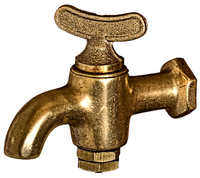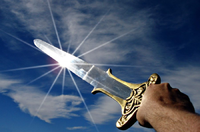Contents
Key Stage 3
Meaning
An alloy is a metal with one or more other elements mixed with it, usually other metal elements.
About Alloys
- Adding different elements to a metal to make an alloy can change the properties of that metal.
Examples
| Bronze was one of the first alloys ever made and is made from around 88% Copper and 12% Tin. | Brass is a very strong alloy made form a mixture of Copper and Zinc. | Steel is an alloy of around 98% Iron and 2% Carbon. |
Key Stage 4
Meaning
An alloy is a mixture of a metal and one or more other elements, usually other metal elements.
About Alloys
- Adding different elements to a metal to make an alloy can change the physical and chemical properties.
- Alloys are made to change the properties of a metal to make it more useful for certain applications.
Examples
| Metals | Properties | Applications |
| 88% Copper + Tin
(Bronze) |
Resistant to corrosion | Statues and ornaments. |
| Copper + Zinc
(Brass) |
Resistant to corrosion
Malleable enough to hammer into shape. |
Pins in electrical plugs, keys, taps, door handles. |
| Gold + Copper | Harder than pure Gold | Jewelry |
| 98% Iron + Carbon
(Steel) |
Much harder than pure Iron.
Malleable enough to be hammered into shape. |
Car bodies, bridges, cables, girders. |
| 85% Iron + 11% Chromium + Nickel + Carbon
(Stainless Steel) |
Much harder than pure Iron.
Resistant to corrosion. |
Cutlery, reaction vessels |
References
AQA
- Alloys, page 120, GCSE Combined Science; The Revision Guide, CGP, AQA'
- Alloys, page 162, GCSE Combined Science Trilogy 1, Hodder, AQA'
- Alloys, page 266, GCSE Chemistry; Student Book, Collins, AQA'
- Alloys, page 91, GCSE Combined Science Trilogy; Chemistry, CGP, AQA'
- Alloys, pages 156, GCSE Combined Science Trilogy 2, Hodder, AQA'
- Alloys, pages 35, 97, GCSE Chemistry; The Revision Guide, CGP, AQA'
- Alloys, pages 46, 204, 257-8, GCSE Chemistry, Hodder, AQA'
- Alloys, pages 54-55, 222-223, GCSE Chemistry; Third Edition, Oxford University Press, AQA'
- Alloys, pages 93, 285, 286, GCSE Chemistry, CGP, AQA'
Edexcel
- Alloy steels, page 102, GCSE Chemistry, Pearson, Edexcel
- Alloys, page 63, GCSE Chemistry; The Revision Guide, CGP, Edexcel
- Alloys, pages 102-103, 203, GCSE Chemistry, Pearson, Edexcel
- Alloys, pages 179, 180, 315, GCSE Chemistry, CGP, Edexcel
- Alloys; uses, pages 104-105, GCSE Chemistry, Pearson, Edexcel


